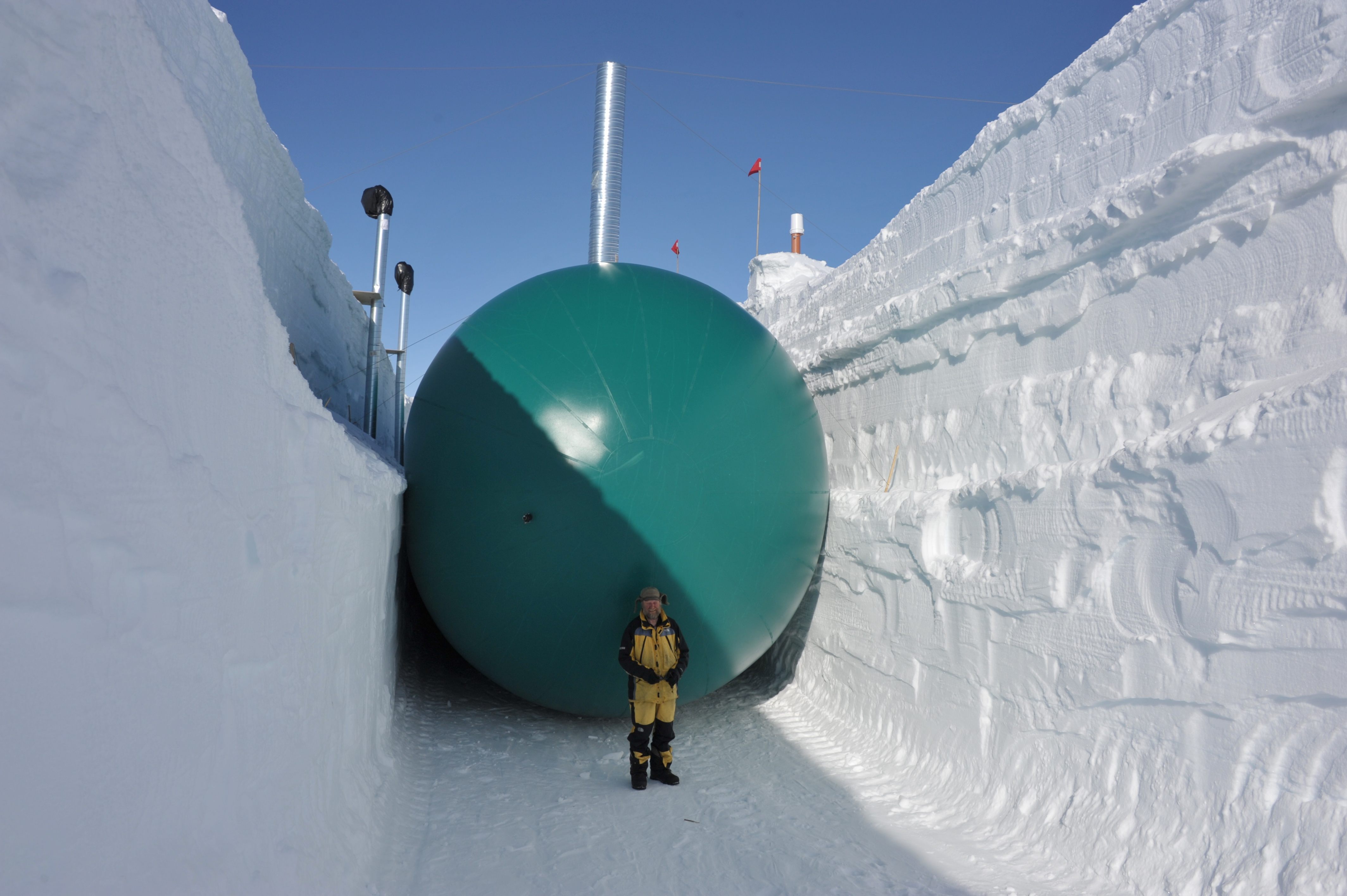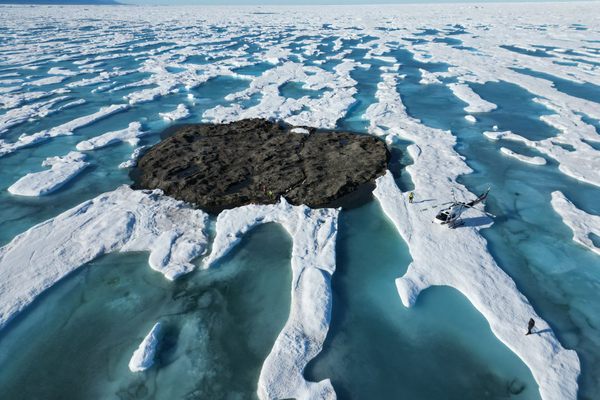The Giant Balloons Creating Arctic Ice Tunnels
They look kind of fun.

Conducting research and science in the Arctic presents a number of problems, not the least of which is how to build a base of operations in a wilderness that doesn’t offer any readily available materials, amid unrelenting elements. Historically, the solution has been tunnels, built beneath the surface ice using imported struts and shoring materials. This solution, though, is not only expensive, but also remarkably inefficient. More recently, according to Science, scientists have started turning to a more whimsical (and cheaper) solution: giant balloons.
The construction process begins much like many previous base-building operations, as industrial-sized snow-blowers cut deep trenches into the ice and snow. But instead of building those into mine-like shafts, giant balloons (up to 40 meters in length) are inflated in the space. Then the balloons are recovered with snow, which is given time to harden.
Once the top layer of snow is hard enough, the balloons are deflated, leaving perfectly arched tunnels behind. The arched shape is not only less difficult to make, it is also more sturdy and easier to maintain than traditional, squared-off corridors.
The balloon method has been in use since 2012 when it was spearheaded by Jørgen Peder Steffensen, a physicist at the University of Copenhagen. They have more recently been used by the East Greenland Ice-core Project (EastGRIP) to create their own tunnel base. Arctic research has rarely looked like so much fun.















Follow us on Twitter to get the latest on the world's hidden wonders.
Like us on Facebook to get the latest on the world's hidden wonders.
Follow us on Twitter Like us on Facebook